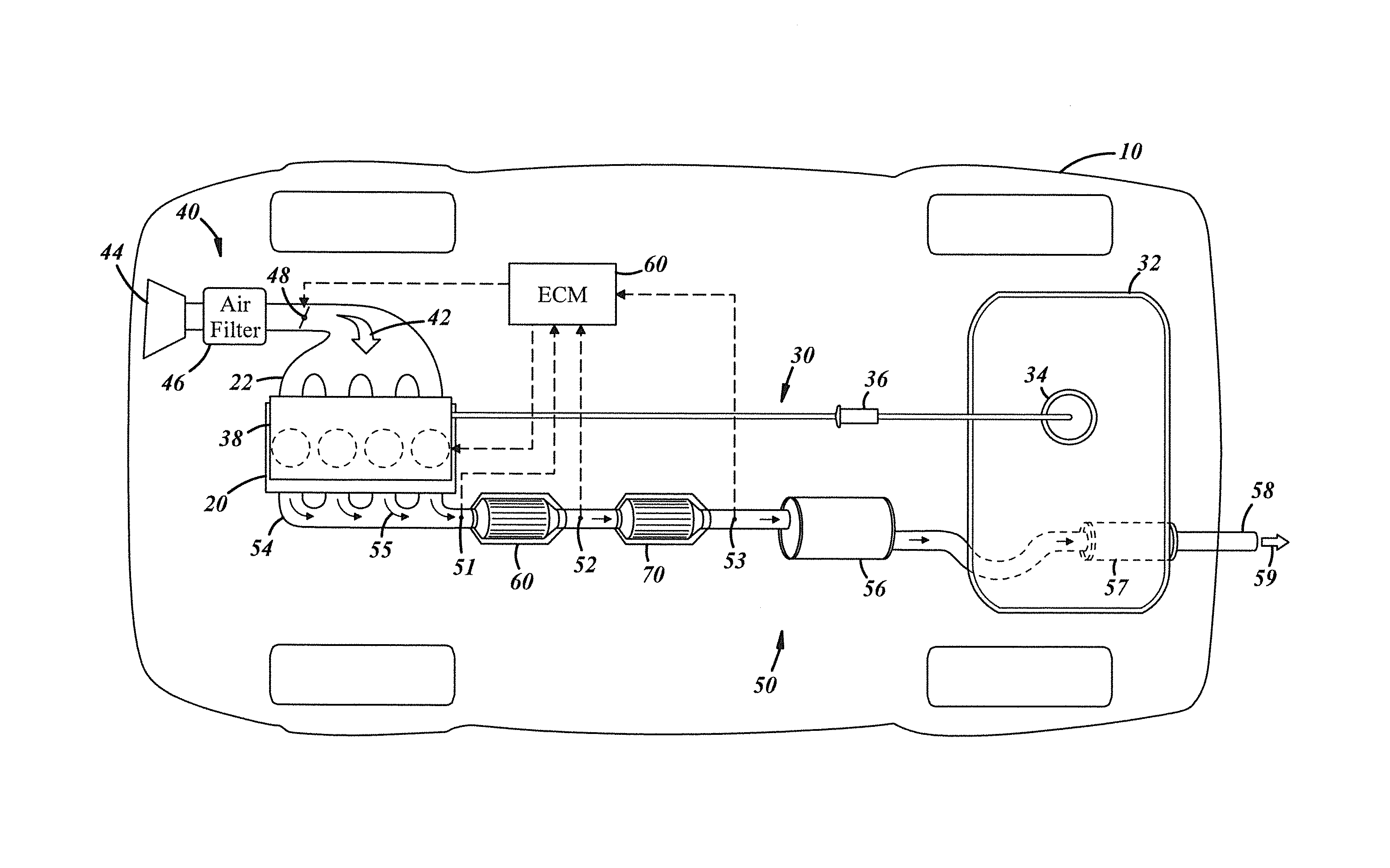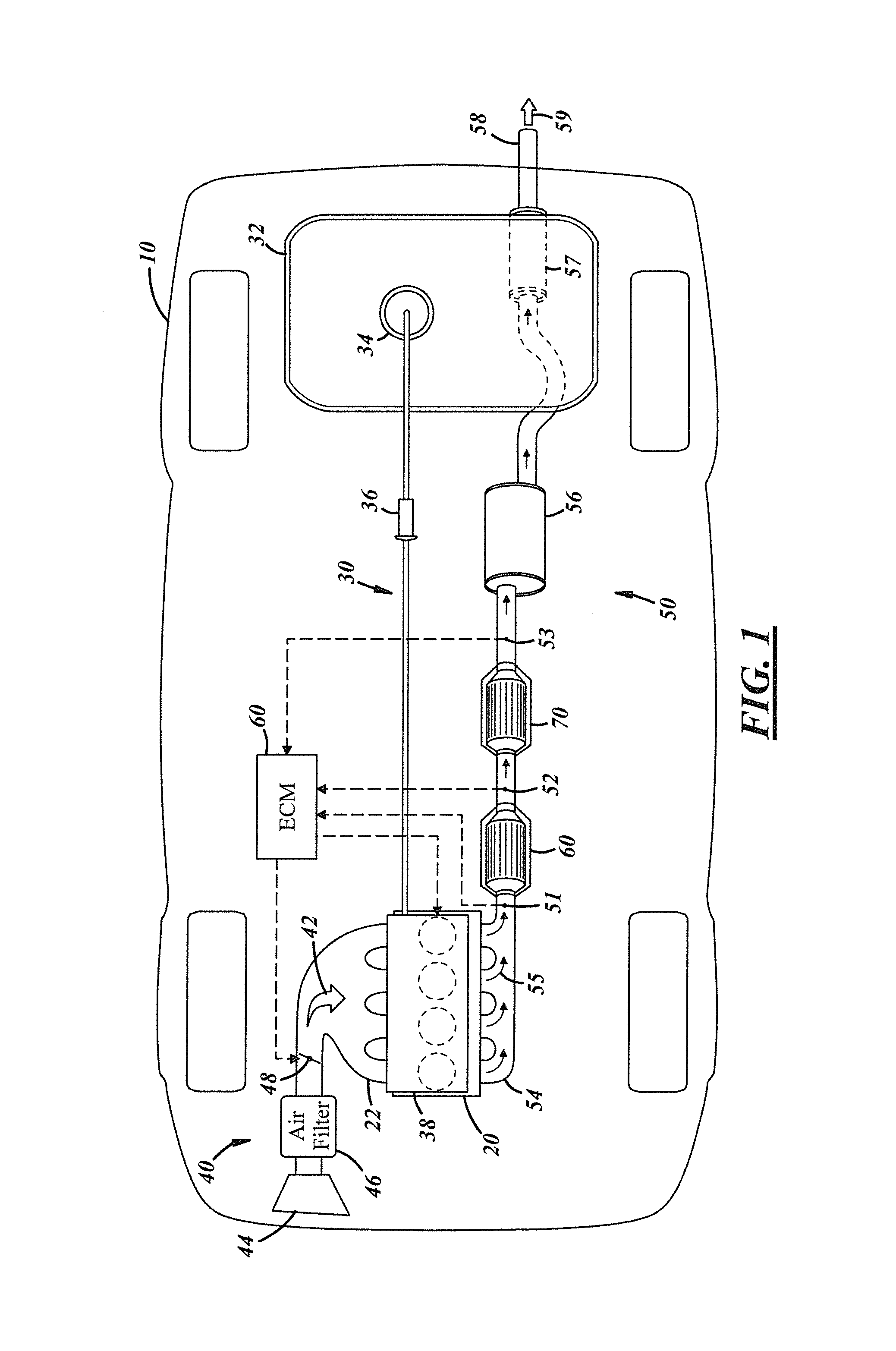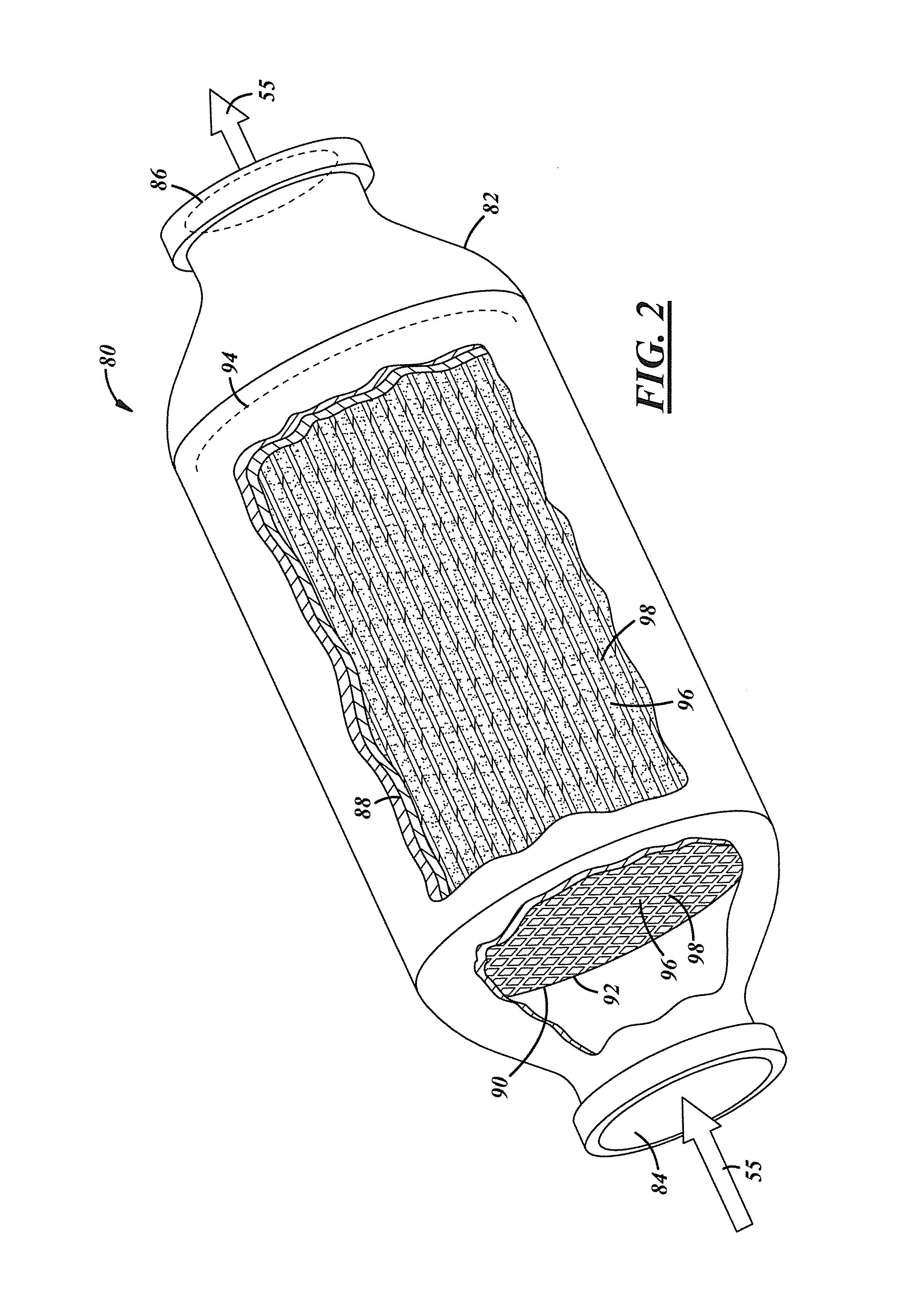Low cost lean NOx reduction catalyst system
a reduction catalyst and low cost technology, applied in the field of exhaust aftertreatment system, can solve the problems of high price of platinum group metals such as pt, rh and pd, and achieve the effect of facilitating intimate contact and reducing the amount of nox
- Summary
- Abstract
- Description
- Claims
- Application Information
AI Technical Summary
Benefits of technology
Problems solved by technology
Method used
Image
Examples
example 1
[0036]The LaMnO3 perovskite oxide particles were suitably prepared for use as powder catalysts by a citrate method. Appropriate amounts of lanthanum nitrate, La(NO3)3, and manganese nitrate, Mn(NO3)2, were dissolved in de-ionized water followed by stirring for about 10 minutes. It was preferable to use nitrates of La and Mn because they produce very little, if any, by-product residues when thermally decomposed and, during such thermal decomposition, evolve a relatively large amount of gas which promotes extensive particle surface area and porosity. Citric acid monohydrate was then added to the solution at 10 mol % in excess of stoichiometry. The solution was stirred for about 10 minutes to complex the La and Mn cations.
[0037]Next, in the dehydration step, the solution was heated to 80° C. under continuous stirring to slowly evaporate the water until the solution became a viscous gel. The temperature was then ramped up at a rate of 10° C. per minute to further heat the viscous gel an...
example 2
[0038]An incipient wetness impregnation technique was used to chemically deposit particles of barium, copper and palladium onto high surface area support particles to form catalyst particles of BaO / CeO2—ZrO2, CuO / CeO2 and Pd / CeO2.
[0039]In this method of catalyst preparation, a salt of the metal catalyst was dissolved in de-ionized water. A suitable amount of the metal-containing solution was then added to a suitable amount of porous support particles so that substantially all of the solution was drawn into the pores of the support particles by capillary action. The metal solution-containing support particles were then dried and calcined to vaporize the liquid, and deposit the metal ions onto surfaces of the support particles. The impregnated support particles were then calcined in an oven at 550° C. for 5 hours. In suitable embodiments, the catalyst particles may be further refined after calcination, if desired, to reduce their size even more before being incorporated into a washcoa...
example 3
[0041]In these experimental examples, 4 grams of the as-prepared powder catalysts and 15 grams of water were ball milled for 18 hours so that the catalyst particles were preferably about 10 to 20 nanometers in diameter. The cordierite monolith samples used in these examples were ¾ inch diameter by 1 inch length with 400 cells per square inch (cpsi) and a wall thickness of 4 milli-inches. The washcoated monolith samples were dried at 120° C., calcined at a temperature of about 550° C. for 5 hours in static air and then aged in an oven for 24 hours at 700° C. in air comprising 10 vol. % water.
[0042]The catalyst materials of the NOX reduction catalyst system were tested in a quartz tubular reactor operated at atmospheric pressure by passing a gas stream over and through a volume of the catalyst particles contained as a washcoat layer or layers on the walls of passages of the monolith samples. The gas stream was formulated to simulate the composition of an exhaust gas flow produced by a...
PUM
| Property | Measurement | Unit |
|---|---|---|
| weight percent | aaaaa | aaaaa |
| weight percent | aaaaa | aaaaa |
| temperature | aaaaa | aaaaa |
Abstract
Description
Claims
Application Information
 Login to View More
Login to View More - R&D
- Intellectual Property
- Life Sciences
- Materials
- Tech Scout
- Unparalleled Data Quality
- Higher Quality Content
- 60% Fewer Hallucinations
Browse by: Latest US Patents, China's latest patents, Technical Efficacy Thesaurus, Application Domain, Technology Topic, Popular Technical Reports.
© 2025 PatSnap. All rights reserved.Legal|Privacy policy|Modern Slavery Act Transparency Statement|Sitemap|About US| Contact US: help@patsnap.com



